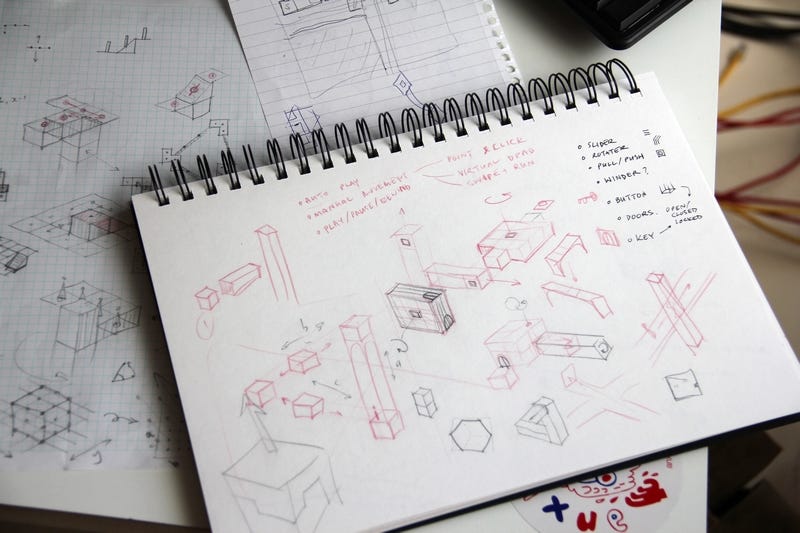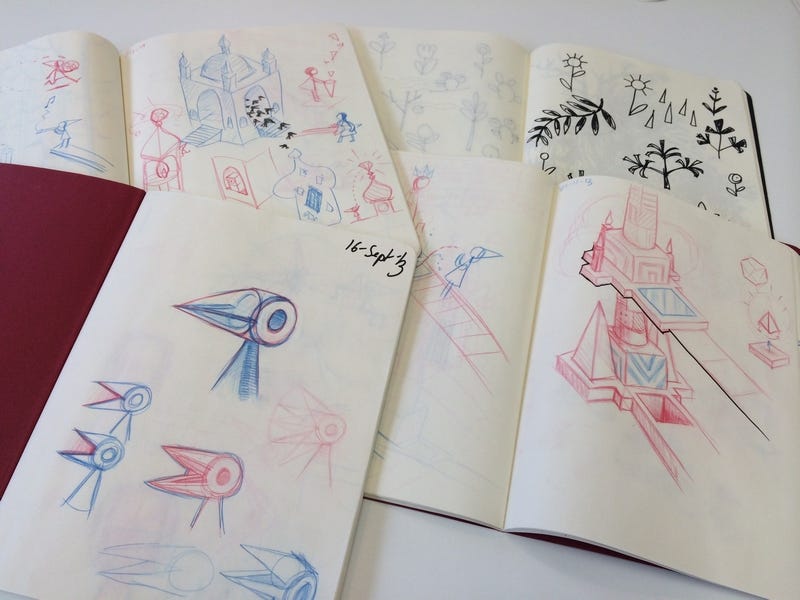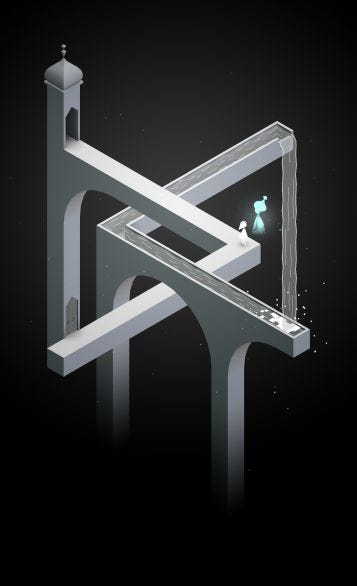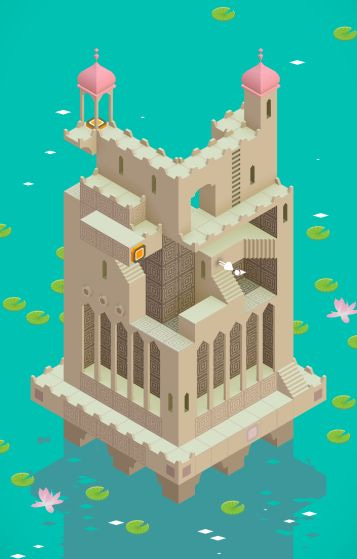Monument Valley and M.C. Escher
Video games let us explore the impossible. #graphicart #architecture #videogame
Welcome back to Artcade, the place where perspectives blur and art forms intersect. As always, after every three free episodes there’s one behind the paywall—I hope that’s a fair balance. To support my work, please consider signing up for a paid Artcade subscription. And now that housekeeping’s done… enjoy the read!
Complexity and simplicity always seem to cancel each other out: if one is present, the other vanishes. At least that’s what I believed until I played Monument Valley for the first time. How those two elements coexist is the very secret that makes Monument Valley unique.
As you can see from the early sketches shared by the developer, the game’s design itself moves along that simple/complex axis.
Child‑like character designs walk through dizzying architecture.
Everything in Monument Valley rests on contrasts: each screen shows impossible architecture that’s instantly understandable. Every level is a puzzle that fools the eye while soothing you with its colors and shapes.
The two images below are details from the iPhone version:
Playing with the interlocking mechanisms that lead you to a level’s exit is pure pleasure. Handling Monument Valley’s impossible gears is as satisfying as unwrapping a candy.
Keep reading with a 7-day free trial
Subscribe to Artcade to keep reading this post and get 7 days of free access to the full post archives.






